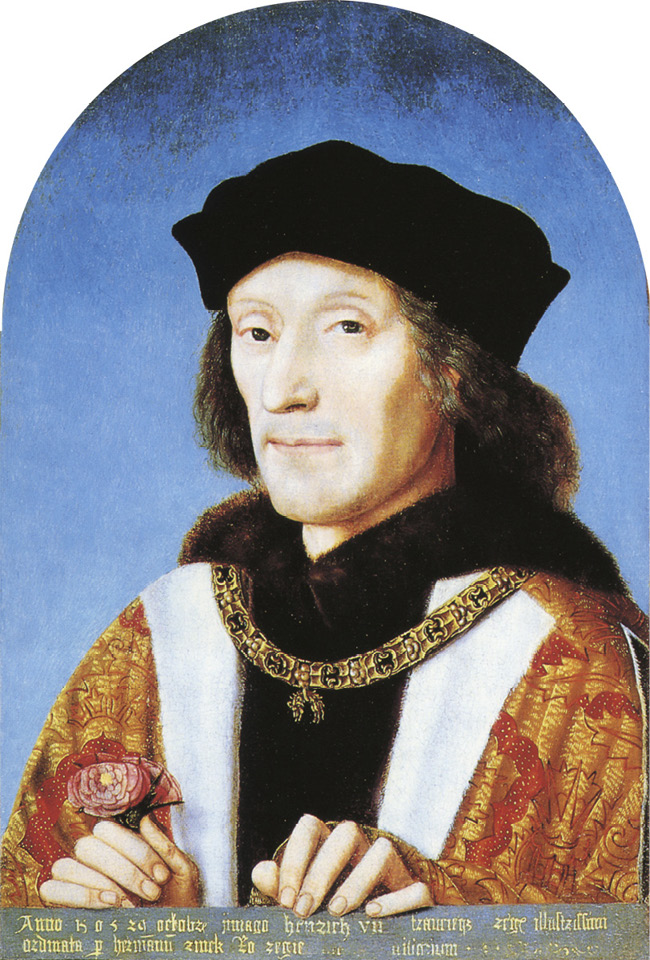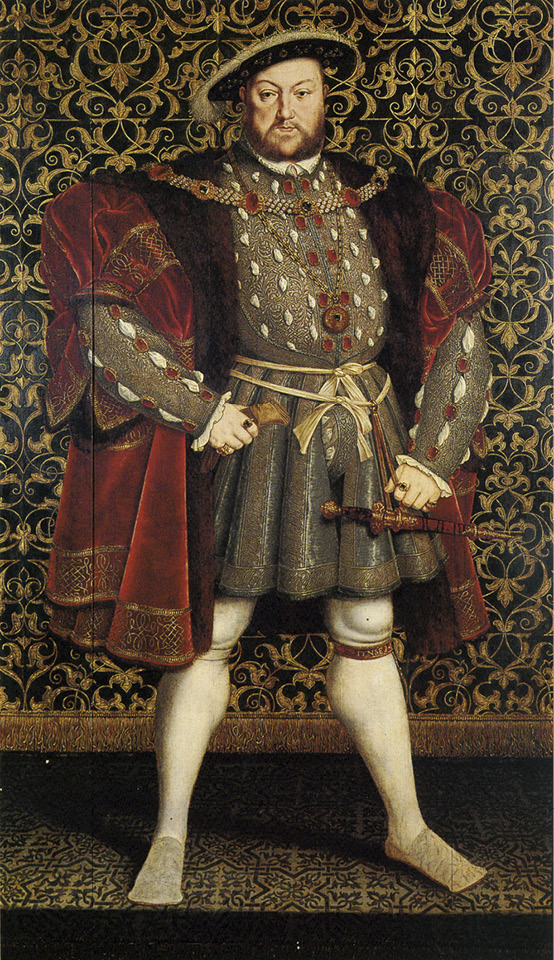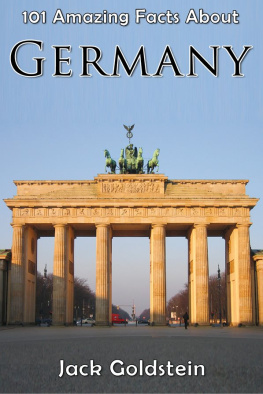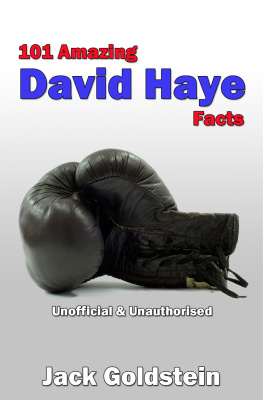Title Page
101 AMAZING FACTS ABOUT THE TUDORS
Jack Goldstein
Publisher Information
Published in 2014 by
Andrews UK Limited
www.andrewsuk.com
The right of Jack Goldstein to be identified as the author of this work has been asserted by him in accordance with the Copyright, Designs and Patents Act 1998
Copyright 2014 Jack Goldstein
All rights reserved. No part of this publication may be reproduced, stored in a retrieval system, or transmitted, in any form or by any means without the prior written permission of the publisher, nor be otherwise circulated in any form of binding or cover other than that in which it is published and without a similar condition being imposed on the subsequent purchaser. Any person who does so may be liable to criminal prosecution and civil claims for damages.
All facts contained within this book have been researched from reputable sources. If any information is found to be false, please contact the publishers, who will be happy to make corrections for future editions.
Introduction
Do you know the main difference between the diet of a Tudor nobleman and that of a peasant? What was it that changed Henry VIII from an active and pleasant young man into a vastly overweight tyrant? What did a gong farmer do? And what was the purpose of a whipping boy? All of these questions and more are answered in this excellent book containing over one hundred facts about the Tudors. Separated into sections covering each monarch of the era in detail as well as more general chapters with interesting, amusing and shocking facts, the book is perfect for anyone studying this fascinating period in English history as well as those with a general interest in the age.
Follow Jack Goldstein on Twitter @GoldsteinBooks
Visit Goldstein Books at www.jackgoldsteinbooks.com
The Basics
- The Tudor dynasty ruled England, Wales and part of Ireland from 1485 until 1603.
- The first member of the House of Tudor to take the throne was Henry VII.
- Henry VII came to power as a result of the Wars of the Roses , fought between the Houses of Lancaster and York - two rival branches of the House of Plantagenet.
- It was Henrys success at the Battle of Bosworth Field which saw Richard III defeated; he was a member of the House of York, whereas Henry was a Lancastrian. Historians consider Richard III to be the last Plantagenet monarch.
- When Henry VII died, his son, Henry VIII took his place on the throne. Henry VIII is perhaps one of the most well-known monarchs that England has ever had, easily recognisable in portraits from his later adult life and famous for having had six wives.
- Edward VI was the next Tudor monarch. Due to his fathers multiple marriages however, his was not the most stable of reigns, troubled as it was by a power struggle amongst the countrys noblemen.
- Another troubled reign followed: that of Mary I. The daughter of Henry VIII and Catherine of Aragon (his first wife), Mary was an unpopular queen for both her religious views and her alliance with Spain.
- The fifth and final Tudor monarch was Queen Elizabeth. She goes down in history as one of the countrys most successful and popular leaders, and in her time was loved by commoner and nobleman alike.
- When Elizabeth died, the Tudor dynasty died with her. The dynasty was succeeded by the House of Stuart, with James I of England (who was already James VI of Scotland) taking the English throne.
- The emblem of the House of Tudor was a red and white rose, formed from a conjoinment of the white rose of York and the red rose of Lancaster.

Henry VII
Henry VII
- Almost the very first thing that Henry VII did after becoming King was to marry Elizabeth of York, a third cousin of his. Whereas Henry was from the House of Lancaster, Elizabeth (as of course her name tells you) was from the House of York. The marriage united the two families, helping Henry legitimize his claim to the throne.
- Henry and Elizabeth had a number of children together, although only four survived past infancy; these were Arthur (Prince of Wales), Henry (Duke of Richmond), Margaret and Mary.
- Understanding that marriage was key to the strength of not just his family line but that of his country, Henry focused on gaining politically beneficial spouses for his children. Margaret married James IV, King of Scotland, and Mary wed Frances King Louis XII. Arthur, the eldest son, married Catherine of Aragon, thus ensuring a strong alliance with Spain.
- Sadly for the King and his family, Arthur died six months after getting married. Because of this, Henry VII asked the pope for special permission for his younger son, also called Henry (and who would later go on to become King) to marry the recently-widowed Catherine. Permission was granted, however the young Henry did his best to delay proceedings.
- Because of the huge cost of the War of the Roses, England was practically broke; at the time the country was considered to be poor in relation to the rest of Europe! Henry VII is considered by historians to have had a successful kingship, as he managed to re-gain a fair amount of the countrys former wealth without annoying noblemen and commoners too much - although towards the end of his reign, Henry did push right up to the limits of legality!
- Henry should also be judged as having been successful at restoring political stability; a less astute monarch could easily have let events of the past thirty years overwhelm him and lose his grip on the throne, however Henrys planning and judgement was exactly what England needed at the time.
- He was rather sneaky at the start of his reign though. Henry declared himself King retroactively from the 21 st of August 1485; this was the day before the battle of Bosworth Field. By doing this, he could then claim that any nobleman who had fought against him (in support of Richard III) had committed treason, and therefore he could legally confiscate their land and property!
- One priority for Henry was to develop the countrys defences, and to do so he began a long period of shipbuilding. By subsidising the construction of new vessels, Henry strengthened the Navy, which became a vital element in the protection of Englands shores over the next century and more. Due to his financial assistance, maritime technology increased significantly, ensuring that not only could England hold her own against her enemies, but could also send expeditions to explore territories further afield than ever before (and thus increasing the countrys wealth through conquest and trade).
- One way that Henry kept control of the country was to use Justices of the Peace - commissioned men who ensured that laws were upheld throughout the Kingdom. Every shire had its own Justice appointed, each serving for one year at a time. Henry played an excellent balancing act with these men - on the one hand giving them enough power to see that laws were followed in the regions they controlled, whilst on the other constraining them so they couldnt get too big for their boots and become a threat to his own rule.
- Henry VII died of tuberculosis on the 21 st April 1509 whilst he was at Richmond Palace. He was buried at Westminster abbey, where you can still today see his magnificent tomb.

Henry VIII
General Facts
- The style of architecture used in house-building during Tudor times was quite distinctive due to the visibly exposed wooden frames and whitewashed walls. A fair number of Tudor houses remain standing in England to this day - Lavenham, a village in Suffolk is particularly famous for its large number of these.
Next page







